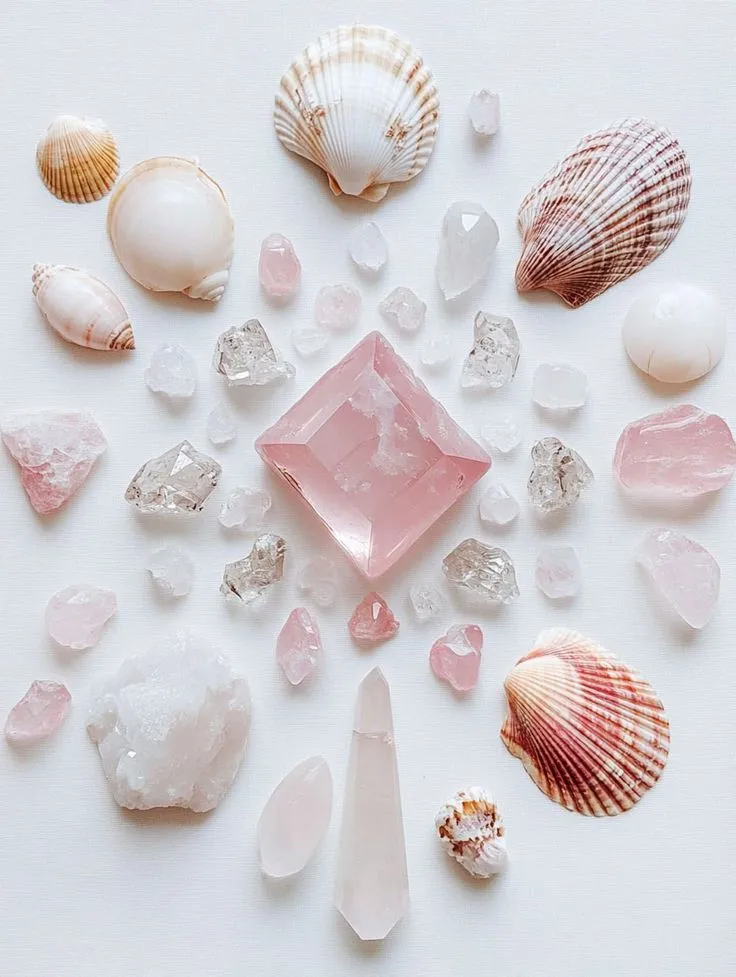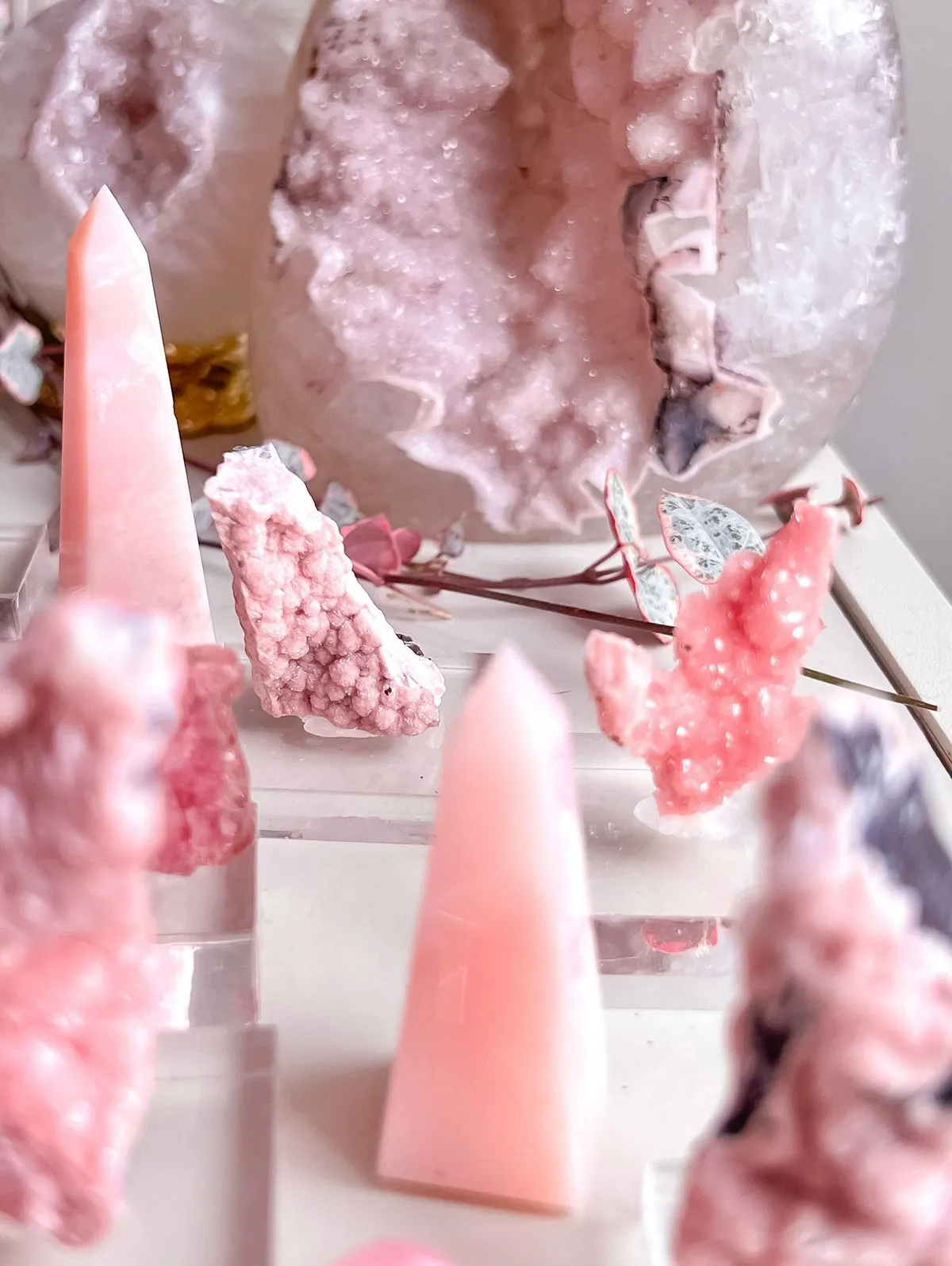Rose Quartz Science and Spirituality
The Science & Spirituality of Rose Quartz: Geology Meets Metaphysics
Picture this: you're holding a smooth, pink stone that seems to capture sunset light. Whether you're scientifically minded or spiritually curious, rose quartz has a way of demanding attention. Its very existence feels like a paradox—born from violent geological processes yet radiating softness. And well, maybe it's not exactly magic... but holding one does tend to quiet mental noise. At least five times this week, I've watched someone unconsciously press it to their chest during tough conversations. There's something about that color—the gentle blush of dawn skin—that makes defenses melt away.
This passage will be explored at:
Geological Origins and Mineral Composition
Picture a steaming hydrothermal vent deep in Earth's crust—a place where patience becomes rock. Over millennia under precise heat, silica-rich waters deposited layers like whispered secrets. What we now call rose quartz began precisely there. You can feel its timeline in the weight of a palm-sized piece, a geological diary where chemistry met serendipity.
That distinctive pink? It emerges from surprisingly harsh origins. The primary composition is straightforward silicon dioxide, while the rosy shades come courtesy of titanium or iron visitors during formation—trace impurities staging a quiet revolution. What's fascinating is how mineral concentration gradients design its personality: deeper magenta pieces often suggest richer elemental encounters. Anyway, the point isn't chemistry class nostalgia. It's how these raw processes created something that instinctively draws human hands toward warmth.

Historical Spiritual Symbolism Across Cultures
Imagine a Mesopotamian artisan carving symbols into cylinders around 700 BCE. They chose rose quartz for royal seals—translating geological gifts into spiritual currency. Centuries later in Asia, healers would place cool stones on temples during feverish nights. That's the thread across civilizations: this stone wasn't decoration, but a participant in human vulnerability.
Now consider that soft hue we mentioned earlier. Cultures from ancient Greece to Song Dynasty China interpreted that palette identically—a visual shorthand for unconditional compassion. The thing is, color perception shapes emotion universally. Soft pinks remind us of skin contact or tender blossoms, bypassing language to symbolize love—not romantic flutters but the kind that endures life's roughness. Maybe these interpretations weren't so much coded spirituality... rather, shared vocabulary about what heals.
Practical Applications for Modern Use
So where do geology and heart energy intersect daily? Say on your desk during stressful meetings. Unadorned chunks work wonders without jewelry's formality. Their tactile reality grounds while the color invites gentler thoughts—a sensory bridge between ancient formation and modern anxiety.
Meditation and Mindful Spaces
Try this: lay stones near your meditation spot. Studies hint that incorporating natural materials into such spaces enhances atmospheric tranquility. Its irregular surface becomes a focus anchor when thoughts scatter. Press it lightly against knuckles to return attention to breath—think physical punctuation mark. Over time, the practice itself becomes an invitation to sit with discomfort kindly.
Resting Zone Integration
Notice what happens when you place one on your bedside table. That visual softness near resting areas changes how spaces feel even without conscious ritual. Dim lighting interacts with the stone's translucency, creating miniature auroras against walls. At some point, your brain starts associating it with unwinding—a trigger for shoulders to release before sleep claims you. Simple placement trains gentle predictability.
Sensory and Emotional Influence
Here's why scientific types and metaphysicians agree: energy expresses through senses. Rotate rose quartz near a window. When sunlight strikes just right, faceting creates diffraction patterns—little rainbows dancing across surfaces. Science observes light physics; spiritually, we feel joy. Both interpretations require presence to witness.
Regular contact matters too. Many report calmer emotional awareness developing after weeks of consistent proximity. Notice that phrase "awareness"—not miraculous shifts, just subtle noticing where frustration once dominated. Is it the stone's influence or conscious practice? Hard to separate. Maybe a textured edge against your thumb during tense calls reminds: breathe first, react later.
A Quiet Nudge
Try placing rose quartz where you'll encounter it daily—maybe near keys or a tea station. For one week, pause when touching it to name three sensations: breath rhythm, body tension, surrounding sounds. No journaling needed. Just noticing.
Cleansing and Energetic Maintenance
Crystals accumulate more than dust. After heavy emotional days, your stone absorbs intention residue like psychic thumbprints. Gentle maintenance preserves both physical integrity and symbolic meaning—after all, its energy renewal mirrors our own need for self-resets.
Sunlight Sensitivity
Limit direct sun exposure—beyond two hours risks UV fading. Think dawn light rather than noon glare, much like self-care works best in moderation. Place it where morning rays skim but never scorch.
Water Interactions
If rinsing under tap water, dry thoroughly afterward. With saltwater bathing—popular for energetic clearing—always rinse afterwards to prevent crystalline corrosion. The temporary elemental conversation shouldn't become permanent damage. Like healthy boundaries, protection enables longevity.

Long-term Value and Selection Criteria
Selecting rose quartz feels like choosing conversation partners. Hold candidates near daylight. Translucency matters: examining inner fracture patterns helps gauge structural integrity and future durability. Deeper fractures make jewelry risky but raw stones charming. Ask: does this feel companionable?
Sustainable ethics shape legacy too. Ethical sourcing verification honors communities involved in extraction while minimizing ecological scars. Truthfully? Heavier pieces with richer color often survive generations as talismans. That longevity makes them perfect companions for anyone deepening their self-trust journey.
Addressing Scientific and Spiritual Questions
How can a crystal influence emotional states?
Think of it as an external anchor. When tracing its contours during distress, the physical sensation interrupts emotional spirals. Over time, this neural reroute becomes automatic. No magic required—just neuroplasticity responding to repeated cues.
Why the heart-centered associations?
The pink color frequency mirrors skin blush—a universal indicator of life and vulnerability. We're biologically conditioned to perceive it as non-threatening. Historically, this made rose quartz a cross-cultural symbol for tenderness.
Does spiritual use conflict with geological reality?
Not mutually exclusive. Science maps titanium content creating rosy hues; spirituality observes how humans respond to softness. Different languages describing interconnected phenomena—like calling water both H₂O and source of life.

